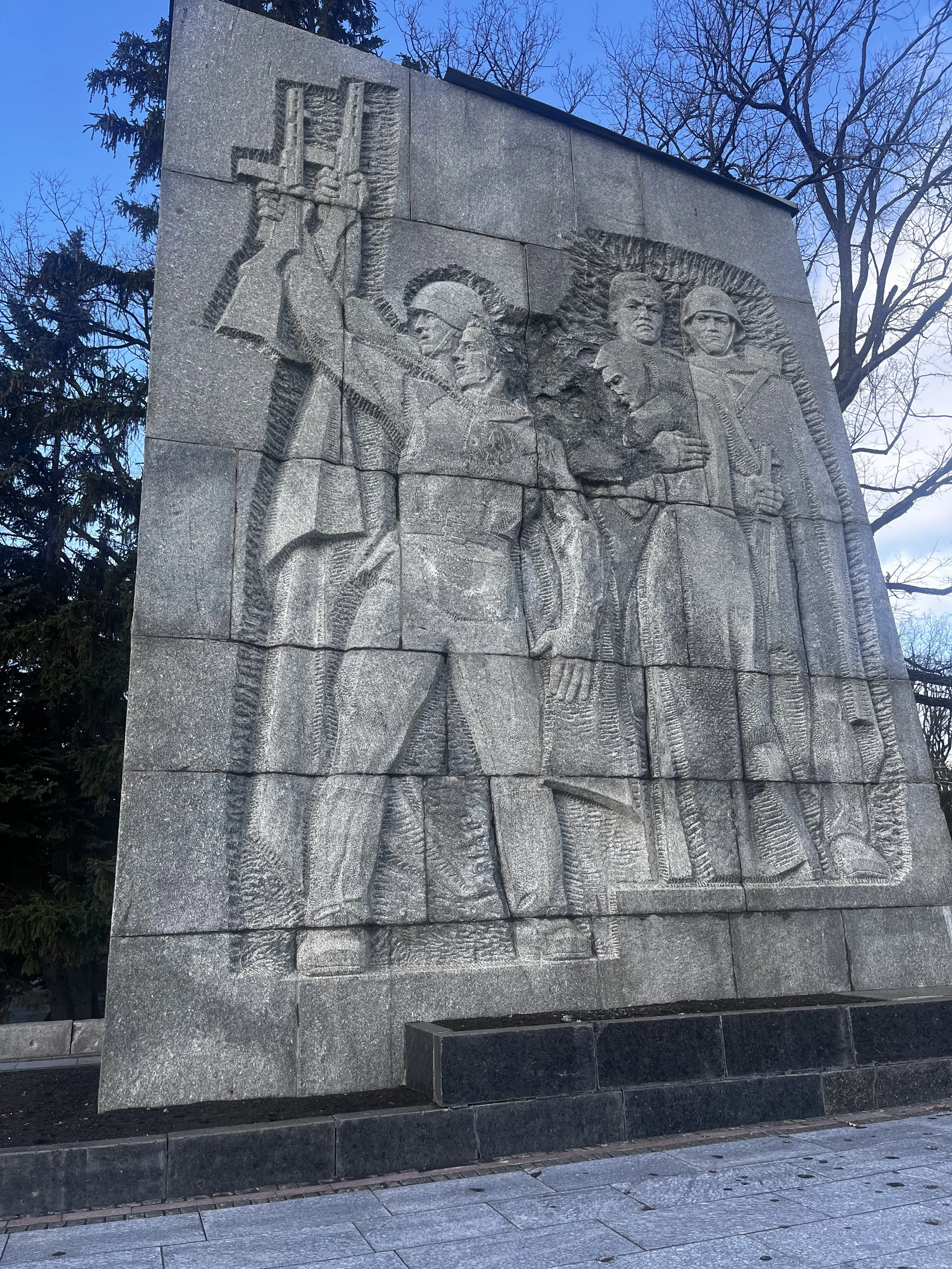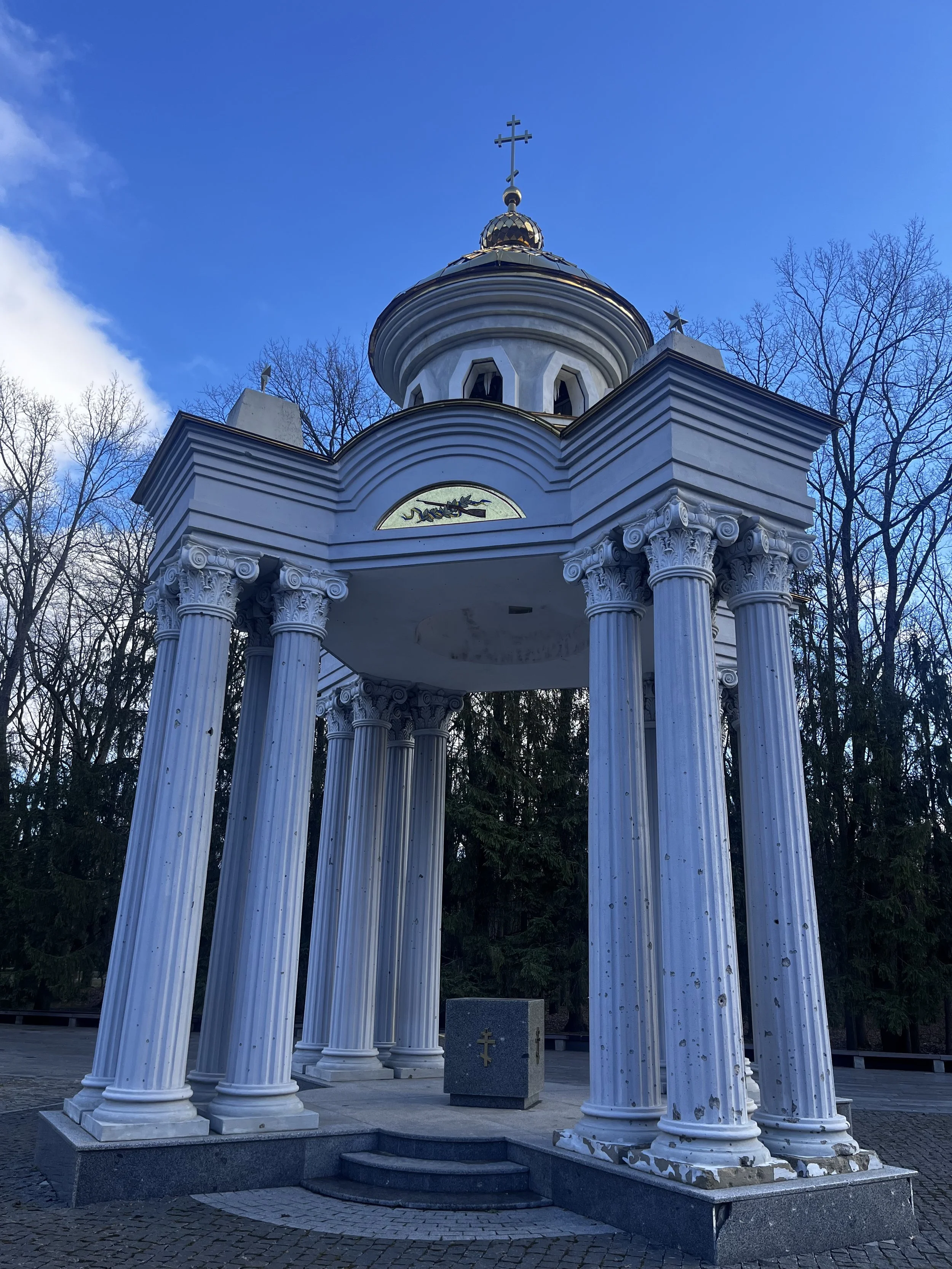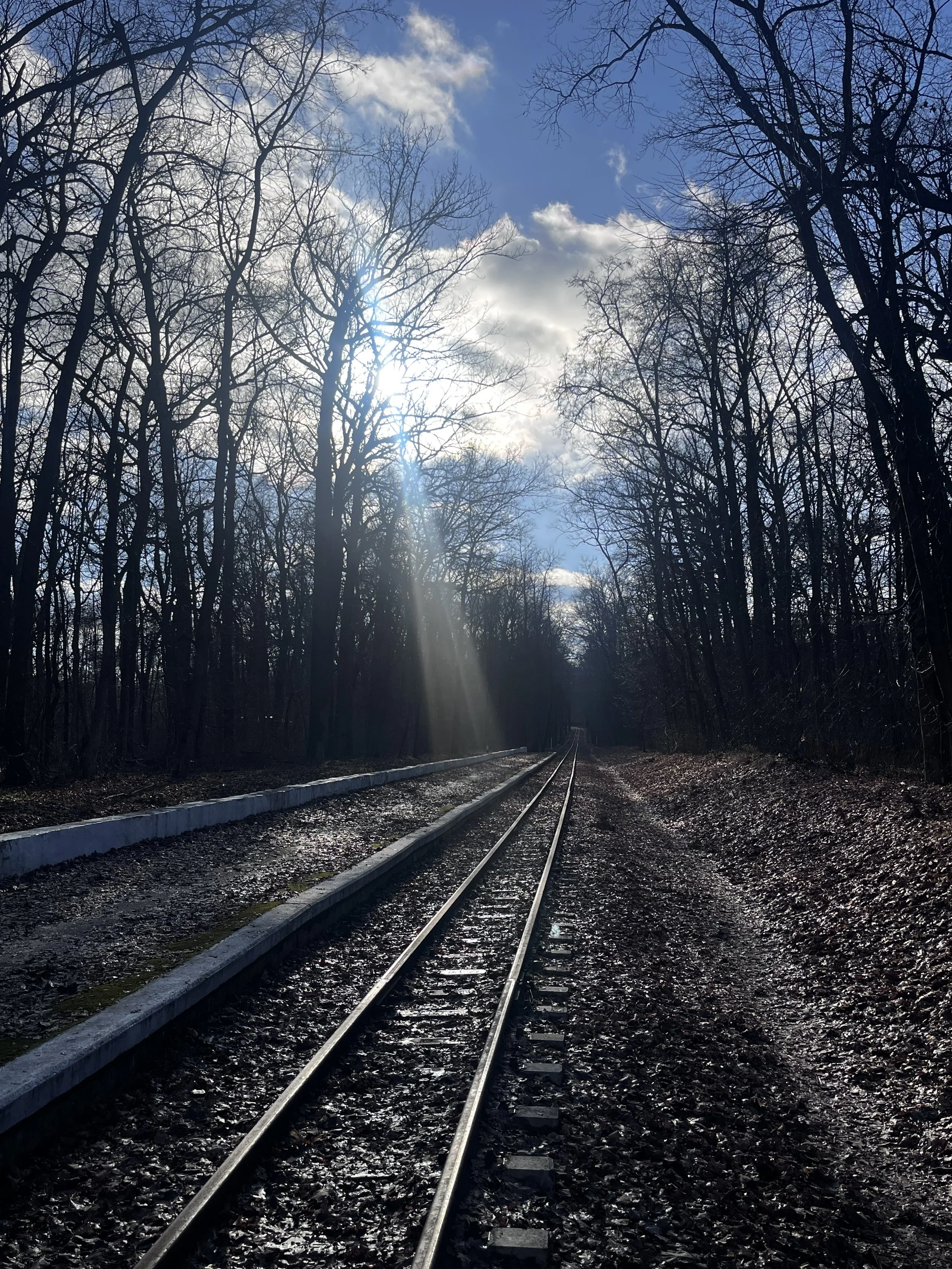Kharkiv’s Memorial of Glory
The Memorial of Glory lies in the pine forest that edges northern Kharkiv. Built in the 1970s over the mass graves of partisans and civilians executed by the Nazis, it was designed as a Soviet shrine to victory. Wide granite avenues lead to a bowed mother figure and to three steles inscribed with promises of immortality. Like much of Kharkiv, a city of utopian architecture and bombed-out kindergartens, it feels suspended outside ordinary time,
The site is immaculate. Street sweepers move quietly through the trees, brushing away pine needles. They keep the lawns trimmed and the granite washed, as though tending to a comatose relative. Two police officers idle in a car at the entrance, overseeing non-existent visitors and the idea of order.
For decades this was one of Kharkiv’s most scripted spaces. On 9 May, veterans gathered here with carnations and medals; schoolchildren sang of the “Great Patriotic War.” After independence, the ceremonies continued in a smaller, more contested form: Soviet songs sung in Russian set against speeches about liberation from Moscow’s shadow. After Russia’s 2014 invasion engulfed the neighboring Donetsk region, police were needed to keep rival groups apart.
Those arguments have since fallen silent, not resolved but rendered irrelevant by 24 February 2022. The Eternal Flame has been extinguished, the rituals abandoned. The memorial is cared for but seldom visited. It is a place kept out of respect rather than conviction.
Inscription reads (in Russian):
Your exploits are immortal and your glory is immortal.
Shrapnel damage on the Chapel of the Archangel Michael, constructed after Ukrainian independence.
That persistent ambivalence evokes Kharkiv’s complicated inheritance. How does a city narrate its history when its past was shared with — and shaped by — its aggressor, and that same past is now used as a weapon against it?
For some, the answer might be to reject that history and to identify solely with those nationalist partisans who resisted both the Nazis and Soviets. But that is only one fragment of memory. Far more Kharkivites fought and died in the Red Army, defeating fascism on behalf of the Soviet Union. Their experiences of loyalty, survival and ambivalence cannot be reduced either to ‘glory’ or to ‘tragic victimhood.’ Kharkiv’s heroism is its legacy, but so too is its nuance. Its heroism may follow from this nuance, giving the city the character and the temperament to repel and resist Russian occupation.
Beyond the granite monumentalism, as you walk into the forest, you find impact scars and even the odd missile shell, half-buried in the grass and already decaying into the landscape. Ready to destroy history in order to own it, the Russians bombed this site in 2022 together with several other memorials.
Russia’s war has turned common memory into an accusation. The language of “denazification” is first and foremost a smokescreen for annihilation. Amid the physical destruction, Russia’s missile-borne propaganda is meant to sever Ukrainians from their contribution to victory in 1945, to make them strangers to their own WWII dead.
When I last visited the Memorial of Glory, in springtime 2025, a Kharkiv soldier accompanied me. He didn’t see the point of the visit. “You could ski here once,” he said, searching for comfortable conversation as we crossed a disused railway line. “Not now. Not safe.” He warned me to keep on the path, useful guidance in a region pockmarked with mines and fragments.
When the trail faded out, we returned to the immaculate Soviet monument. Its meanings cannot be celebrated or denied. To maintain this monument is to refuse erasure, while to abandon it would feel like surrender. But to visit it feels like complicity in a web of lies. The betrayal lingers in every corner, until the immediacy of war pulls us away. The slow percussion of artillery carried through the still woods from besieged Lyptsy, one war echoing another.
Questions of inheritance and memory will have to wait for a time when today’s defenders will be glorified in new memorials. Those who will visit them already walk the city. For now, they face more urgent questions: can we find seventeen DJI Mavic drones? Can someone replace the air-defence vehicle? And when the killing stops will we be the ones memorialised or the ones commemorating?
Inscription reads: Heroes do not die. They attain immortality and forever remain in our memory, in our deeds, in the great works of future generations. Their descendants owe their lives to them. Here lie comrades of the Soviet people — soldiers, underground fighters, partisans, and civilians who fell in the struggle against fascism for the freedom and happiness of our Motherland.
ETERNAL GLORY TO THE HEROES!
Dr. Jade McGlynn is a Leverhulme Early Career Research Fellow the Department of War Studies, King’s College London and Senior Research Fellow at the Centre for Statecraft and National Security.






